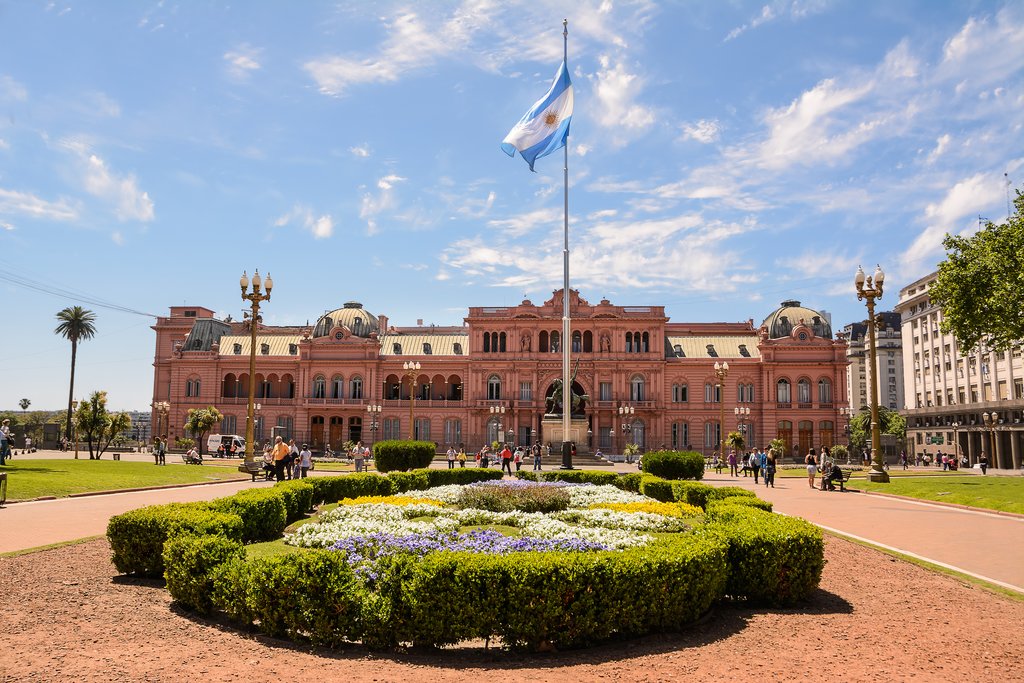Planning Your Trip to Buenos Aires
Long known as the "Paris of South America," Buenos Aires has for years drawn travelers for the promise of a bit of Europe in the western hemisphere. The city delivers on that promise, too. You see it in the historic neighborhoods, in the Baroque buildings and in the well-manicured parks, and in the café culture.
However, Buenos Aires is more than a far-flung Euro outpost at the edge of the world. This city's Spanish/French/Italian influences have melded with Latin American culture to create a spirit that's a world apart. Porteños (people of the port), as those from Buenos Aires are known, have passion to spare, and they channel it into their two favorite past times: nightlife and fútbol.
Travelers will be pleased to know that locals will, for the most part, welcome them with open arms. Even better, although Argentina has had an on-again/off-again relationship with reciprocity fees in the past, as of 2016, US citizens don't need to pay money to enter the country. The doors are wide open, and now is the perfect time to come and check out all that Buenos Aires has to offer.
And if you're curious as to the best time to visit Argentina in general, read here.
24 hours in Buenos Aires

Despite its small size, you can devour significant portions of Buenos Aires in a day. You'll even find that Buenos Aires's high energy lends itself to an abbreviated adventure within the city limits. So whether you're on a layover or transferring to another part of the country to continue your vacation, get ready for an unforgettable time in a great global city that's even more alive at night than it is during the day.
A walking tour of the city center will allow you to see the major sights, including and especially the Casa Rosada (Presidential Palace), located in the historic Plaza de Mayo. Directly south of here is the oldest neighborhood in Buenos Aires: San Telmo. Famous for its cobbled streets and wooden balconies hanging from the sides of 19th-century buildings, this is the place to come to while away the hours in a café or browse the weekly street markets at Plaza Dorrego.
Farther south is another old neighborhood, La Boca. Its colorful Caballito Street is popular with those interested in tango culture, but locals come here primarily for La Bombanera. This is the home stadium of one of the city's two major fútbol teams: the Boca Juniors. Seeing a match here is an unforgettable experience abounding with raucous energy that you feel in your bones.
After spending a day walking around the city, try to make it to the upscale waterfront neighborhood of Puerto Madero. The main thing to do here is to walk across the Puente de Mujer. The sleek and sharp lines of this bridge make for one of the great icons of the city, on top of being the perfect spot for a romantic sunset stroll. Then, if you have time, you can enjoy dinner and a live tango performance at a dinner theater in Puerto Madero or the city center.
Chat with a local specialist who can help organize your trip.
2-3 Days in Buenos Aires

With a little more time in Buenos Aires, you can tour the city at a more relaxed pace and see even more sights. Beyond the highlights mentioned above, you should visit the famous Cementerio de la Recoleta. This labyrinthine burial place is home to the ornate tombs of some of the wealthiest families in Argentina's history. Interred here are everyone from famous generals of the Wars for Independence to Evita Peron herself (buried in the tomb of the family Duarte).
No trip to Buenos Aires is complete without a leisurely stroll through its famous parks. Head to the Palermo neighborhood and visit the botanical garden as well as Parque Tres de Febrero. These green spaces were designed by the master French-Argentine landscape artist Charles Thays in the 19th century. He was influenced by the gardens of Versaille, which you'll see in the ornate landscaping.
With one extra day in the city, there's only one place to go: Estancia Santa Susana. Located a mere hour north of the city, this working estancia (ranch) is the quintessential Argentine country experience. Upon arrival, you'll be treated to a traditional asado (barbecue) followed by folkloric musical performances and gaúcho shows where real cowboys display their prowess on horseback. For a Buenos Aires vacation that includes a trip to Santa Susana, check out this itinerary.
5-7 Days in Buenos Aires

Spend the first couple of days touring the city's famous neighborhoods. In Palermo, try a unique dinner party where, in a group, you'll prepare traditional Argentine dishes like empanadas and learn about (and imbibe) great Argentine wine, including the nation's famous Malbec. Then spend the remainder of your days combining various day trips around the city.
One option is a visit to Tigre, located on the Paraná River. This singularly beautiful river town is comprised of stately 19th-century manor homes lining tranquil river canals. It's also home to the Tigre Club, a luxurious former casino and exclusive social club built in the Belle Epoque style in the early 20th century. Today it's been converted into the Tigre Municipal Museum of Fine Art, although the building itself has lost none of its glory and luster.
After a day in Tigre, you can spend the next day at the aforementioned gaúcho show in the countryside. Back in the city, spend the remainder of your time enjoying the city's nightlife and visiting any historic neighborhoods you might have missed on your first day. Almagro is one such historic barrio that makes for a great walking tour due to its abundance of impressive street art. And be sure to spend some time walking Ave. 9 de Julio. Featuring 16 lanes, this is the world's largest city street.
